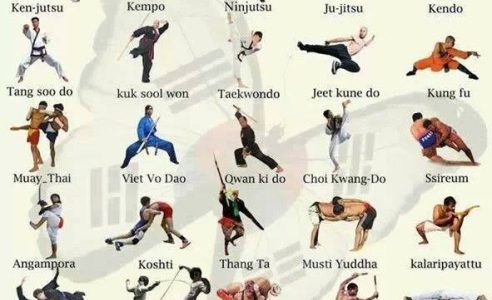The Growth And Historic Context Of Martial Arts Worldwide
The Growth And Historic Context Of Martial Arts Worldwide
Blog Article
Post Developed By-Chu Fallon
Martial arts have a remarkable history that spans centuries and continents. You may locate it intriguing exactly how ancient practices like Shuai Jiao and Kalaripayattu prepared for contemporary combat methods. These self-controls not only highlight physical skills yet likewise reflect the cultures that birthed them. As you discover their evolution, think about how globalization has changed these typical kinds into crossbreed styles. What influences do you believe have shaped today's martial arts landscape?
Ancient Martial arts: The Foundations of Fight
As you look into the world of old martial arts, you'll find the abundant foundations that formed battle methods across societies. Very early techniques concentrated on Self-Defense and survival, frequently integrating strikes, grappling, and weapons.
In old China, for example, methods like Shuai Jiao emphasized throws and joint locks, while India's Kalaripayattu showcased agility and liquid activity. Japanese samurai developed Kenjutsu, a polished swordsmanship that highlighted discipline and approach.
These martial arts served not just for fight yet additionally as a means of personal advancement, instilling worths like respect and determination. The blending of these techniques over time prepared for the diverse martial arts you see today, each mirroring the distinct approaches and demands of its culture.
The Social Influence on Martial Arts Development
While martial arts typically reflect the functional needs of a society, they also personify the social values and ideas of their origins. When you check out different martial arts, you'll see how they're affected by religious beliefs, approach, and social norms.
For example, the focus on regard and self-control in Japanese martial arts originates from Zen Buddhism and samurai society. On the other hand, Brazilian Jiu-Jitsu promotes versatility and strategy, formed by the need for performance in a varied, modern environment.
You may locate that the rituals, uniforms, and training techniques mirror a community's history and identity. By understanding these social influences, you grow your gratitude of martial arts and their role in shaping human experiences around the world.
Modern Adaptations and the Globalization of Martial arts
Martial arts have actually changed significantly in current years, adjusting to contemporary society and international impacts. https://copingforkidsthroughthema99877.blogproducer.com/42695654/recommendations-on-consuming-well-and-working-out-for-individuals-that-exercise-martial-arts 'll see that typical kinds have combined with modern strategies, producing hybrid styles like mixed martial arts. view it now satisfy varied target markets, making martial arts available and attractive around the world.
With the increase of social media and digital platforms, you can find tutorials and competitions from all corners of the world, breaking geographical obstacles. This globalization has actually caused a common appreciation for various techniques, from Brazilian Jiu-Jitsu to Taekwondo.
As you engage with these arts, you'll realize they're not practically battle; they advertise physical fitness, discipline, and mental health.
Eventually, contemporary adaptations have actually enriched the martial arts landscape, making it a vibrant and evolving practice.
Final thought
In exploring the background and evolution of martial arts, you discover a fascinating mix of strategies, societies, and ideologies. From ancient techniques like Shuai Jiao and Kalaripayattu to the modern versatility seen in MMA, martial arts reflect mankind's mission for Self-Defense and individual growth. As you involve with these methods, you not just gain abilities yet likewise a deeper recognition for the diverse customs that form our globe today. So, continue your trip and welcome the art of fight!
